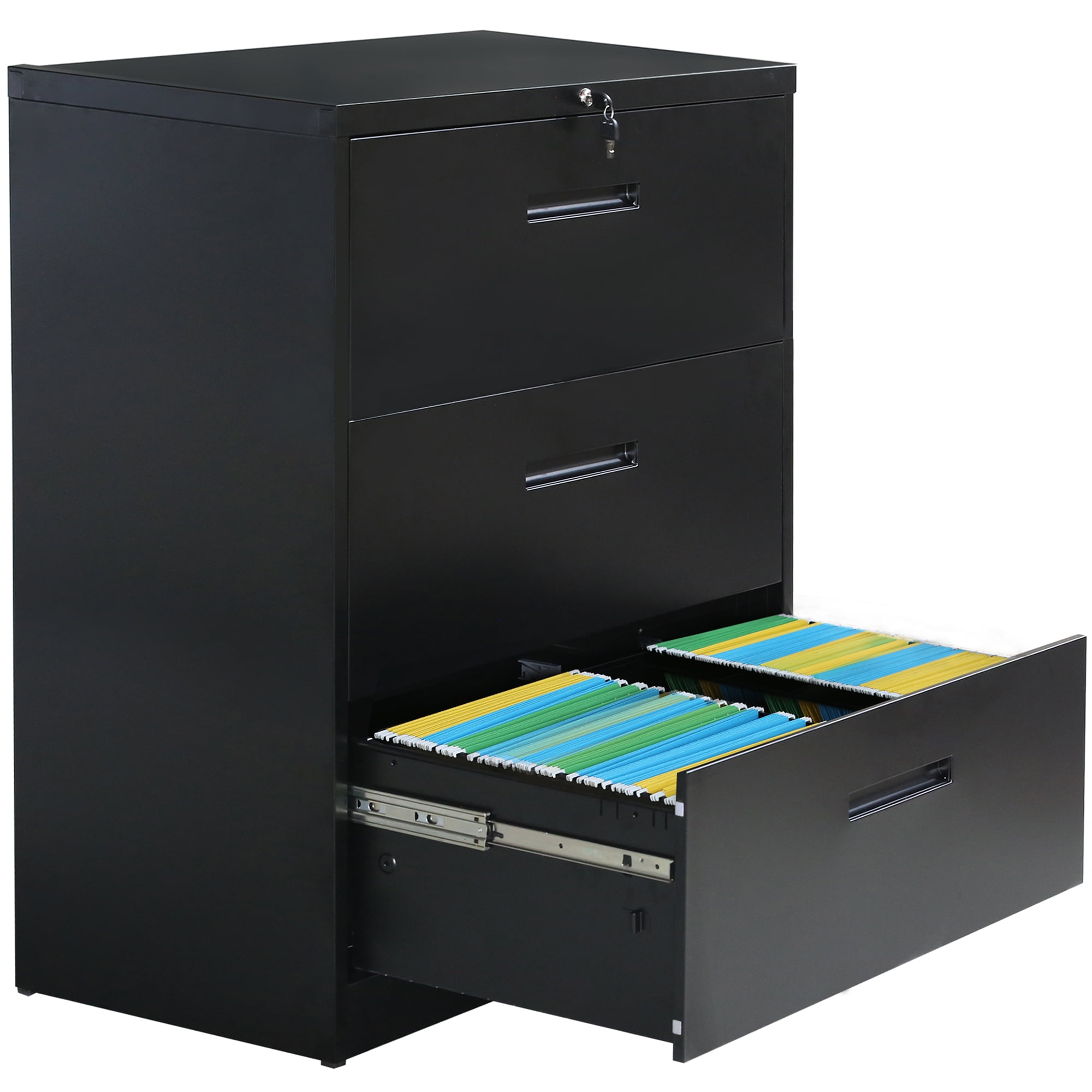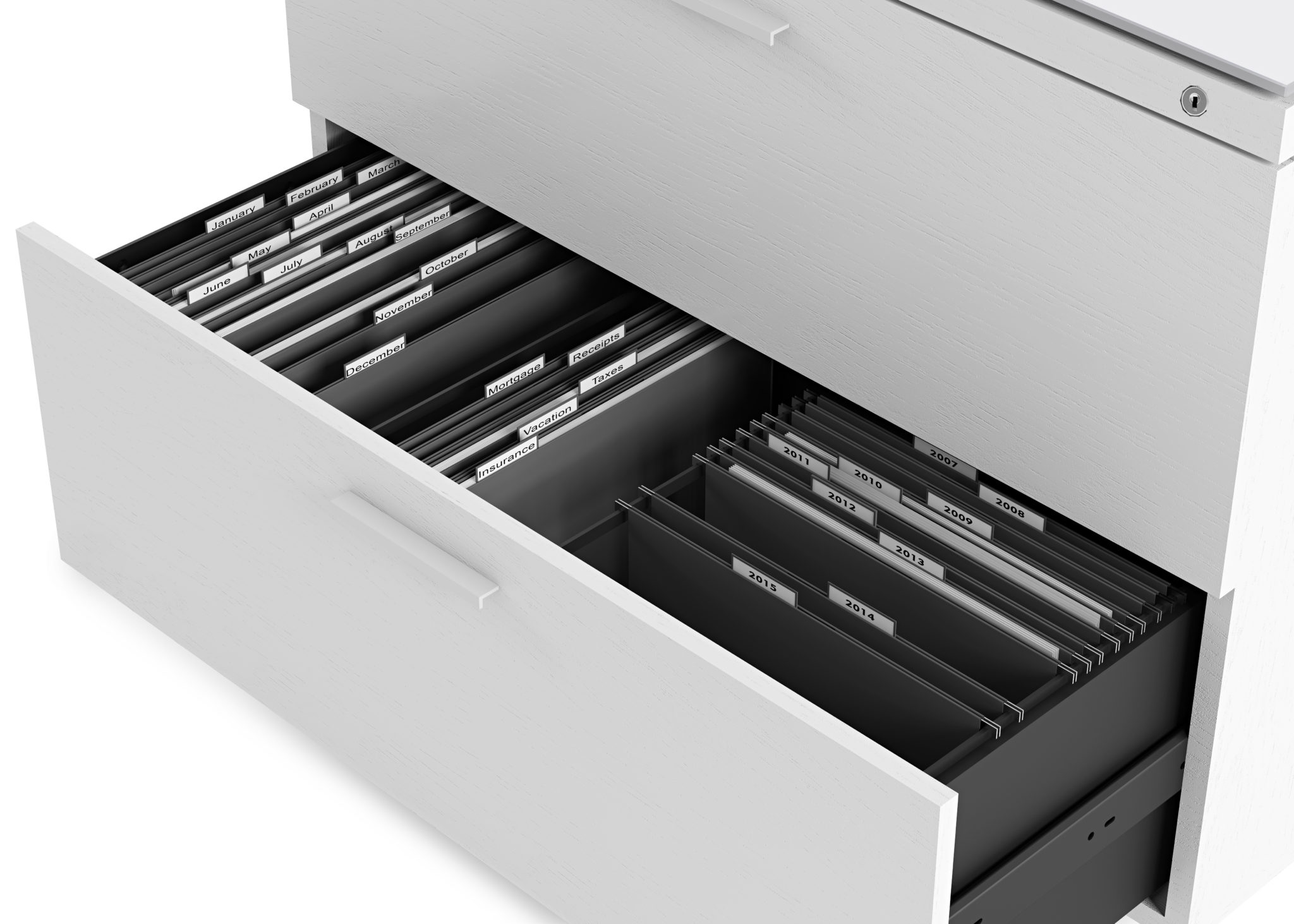Top Features of Lateral File Cabinets

Lateral file cabinets offer a space-saving and efficient solution for document storage in various settings, from home offices to large corporate environments. The selection of an appropriate cabinet depends on a careful consideration of several key features, impacting both functionality and longevity. This section will delve into a detailed analysis of these critical aspects.
Material Comparison and Locking Mechanisms, Best lateral file cabinets
The choice of material significantly impacts the durability, aesthetics, and price of a lateral file cabinet. Steel, wood, and wood veneer are common choices, each possessing distinct advantages and disadvantages. Steel cabinets are generally known for their robustness and security, often featuring heavier-gauge steel for enhanced strength. Wood cabinets, conversely, offer a more aesthetically pleasing option, often integrating seamlessly into traditional or contemporary office designs. Wood veneer cabinets provide a balance, offering the visual appeal of wood with potentially greater affordability. Locking mechanisms also vary considerably. Simple key locks provide basic security, while more advanced electronic locking systems offer enhanced protection and access control. The following table provides a comparative analysis of these features.
| Feature | Steel Cabinets | Wood Cabinets | Wood Veneer Cabinets |
|---|---|---|---|
| Material | Heavy-gauge steel, often powder-coated for durability and scratch resistance. | Solid hardwood or engineered wood, often requiring more maintenance. | Wood veneer over a composite core, offering a balance between aesthetics and durability. |
| Durability | High; resistant to damage and wear. | Moderate; susceptible to scratches and dents; requires regular maintenance. | Moderate to high; more durable than solid wood, but less so than steel. |
| Locking Mechanisms | Variety available, including key locks, combination locks, and electronic locks. | Typically key locks, though some higher-end models may offer more advanced options. | Typically key locks, though some higher-end models may offer more advanced options. |
| Drawer Glides | Often utilize ball-bearing glides for smooth, quiet operation and heavy-duty use. | May utilize roller glides or ball-bearing glides, depending on the quality and price point. | Similar to wood cabinets, depending on the quality and price point. |
| Price | Generally moderate to high, depending on features and size. | Generally high, especially for solid hardwood cabinets. | Generally moderate, providing a cost-effective alternative to solid wood. |
Weight Capacity and Durability
Weight capacity is a crucial factor determining the longevity and functionality of a lateral file cabinet. It directly relates to the cabinet’s ability to withstand the weight of stored files over extended periods. A cabinet with an inadequate weight capacity risks structural damage, drawer malfunctions, and ultimately, premature failure. For example, a cabinet with a 75-pound weight capacity per drawer is suitable for standard office use, while a cabinet with a 100-pound capacity per drawer can handle heavier files or a greater volume of documents. Heavy-duty cabinets may offer capacities exceeding 150 pounds per drawer, making them ideal for archiving or storing large volumes of weighty materials. The relationship between weight capacity and durability is directly proportional; higher weight capacity typically indicates a more robust construction, ensuring the cabinet’s longevity under considerable load.
Aesthetic Considerations
Lateral file cabinets are available in a wide range of colors and finishes to complement various office decors. Steel cabinets are often available in neutral colors like gray, black, and white, while wood cabinets offer a broader spectrum of options, including natural wood tones, stained finishes, and painted surfaces. The choice of color and finish can significantly impact the overall aesthetic of the office space. For example, a sleek, modern office might benefit from a black steel cabinet, while a traditional office setting might prefer a warm, wood-toned cabinet. The selection should align with the overall design scheme to create a cohesive and visually appealing workspace.
Buying Guide and Considerations: Best Lateral File Cabinets

Selecting the ideal lateral file cabinet requires careful consideration of several key factors. The right choice depends on your specific needs, available space, and budget. A well-informed decision ensures efficient storage and long-term satisfaction.
Best lateral file cabinets – The following points highlight crucial aspects to evaluate before purchasing a lateral file cabinet.
Factors Influencing Lateral File Cabinet Selection
Several factors significantly impact the suitability of a lateral file cabinet for a given application. A thorough assessment of these factors ensures a purchase that meets current and future needs.
- File Capacity: Determine the number of files you need to store. Consider both current needs and anticipated future growth. Manufacturers typically specify capacity in linear inches or the number of file drawers.
- Space Requirements: Measure the available space carefully. Account for not only the cabinet’s dimensions but also the necessary clearance for opening drawers and maneuvering around the unit. Consider the overall room layout and potential obstructions.
- Mobility Options: Assess the need for mobility. Will the cabinet need to be moved frequently, or will it remain in a fixed location? Mobile cabinets offer flexibility but may be less stable than stationary ones.
- Material and Construction: Evaluate the cabinet’s material (e.g., steel, wood) and construction quality. Durable materials and robust construction ensure longevity and protection of stored documents.
- Budget: Establish a clear budget before beginning your search. Prices vary significantly based on size, features, and materials.
- Security Features: Consider the level of security required for your files. Some cabinets offer locking mechanisms or other security features to protect sensitive documents.
Mobile versus Stationary Lateral File Cabinets
The choice between a mobile and stationary lateral file cabinet depends on the specific requirements of the user and their workspace. Each type presents unique advantages and disadvantages.
Mobile Lateral File Cabinets: These cabinets are equipped with wheels, allowing for easy movement. This is advantageous in situations requiring frequent rearrangement of office space or where access to files from multiple locations is needed. However, mobile cabinets may be less stable than stationary ones and might require more floor space due to the need for maneuvering.
Stationary Lateral File Cabinets: These cabinets are fixed in place and offer superior stability. They are ideal for situations where the cabinet’s location is permanent and frequent movement is not necessary. They typically provide more robust storage and may offer enhanced security features. However, their lack of mobility can be a disadvantage if office layouts change or if access to files from different locations is required.
Appropriate Usage Scenarios: A mobile lateral file cabinet would be suitable for a small office where space is limited and the files need to be accessed from different areas. A stationary lateral file cabinet would be ideal for a large archive room where stability and security are paramount and files are less frequently moved.
Rewritten Article on Lateral File Cabinets
[Insert Rewritten Article Text Here – This section requires the original article text to be provided for rewriting.]
